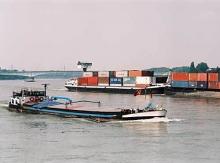Uwaga
Ten artykuł pochodzi z archiwum serwisu WWW i może nie spełniać kryteriów związanych z dostępnością definiowanych przez standard WCAG2.1AA.
The inland waterway transport (IWT) carries abort 500 billion tons of cargo annually. It gives jobs to 44 thousands of people and to another 12 thousands in the related sectors. It is also an important part of tourism, and local and urban transport. Taking into account all of the above, the EU decided to base the “NAIADES II”, the follow up of the “NAIADES I” for years 2006-2013, on the inland waterway transport. The package, adopted in September 2013, mentions five reasons as to why the IWT is so significant, two of them being the quality of performance and climate friendliness. The same reasons were highlighted during the hearing on the “NAIADES II”, which took place on 22nd November in the Committee of the Regions in Brussels. What was also emphasised when it comes to IWT, was its importance for the creation of the real trans-european transport network and IWT’s low costs. However, before IWT reaches the goals set in the package, there are numerous obstacles to overcome, such as the need to develop new types of ship engines and to create suitable and smart infrastructure. The latter is also set as the priority for implementing the “NAIADES II”, since problems such as bottlenecks or missing links can largely affect the IWT. So can a bad multimodal governance – that is why there is a necessity to avoid duplication of strategies, and to involve stakeholders in the entire process. Equally important is the integration of the IWT into the multimodal transport chains, which can be done by increasing the role of ports and adjusting the logistics. Last, but not least of the issues tackled during the hearing was the greening and innovating aspect of the inland navigation, which focused in particular on minimising the interference in ecosystems, and on the concept of finding cheap, eco-friendly fuels for vessels, such as LNG.
Text about LNG available here.
More information on “NAIADES II” can be found here.
